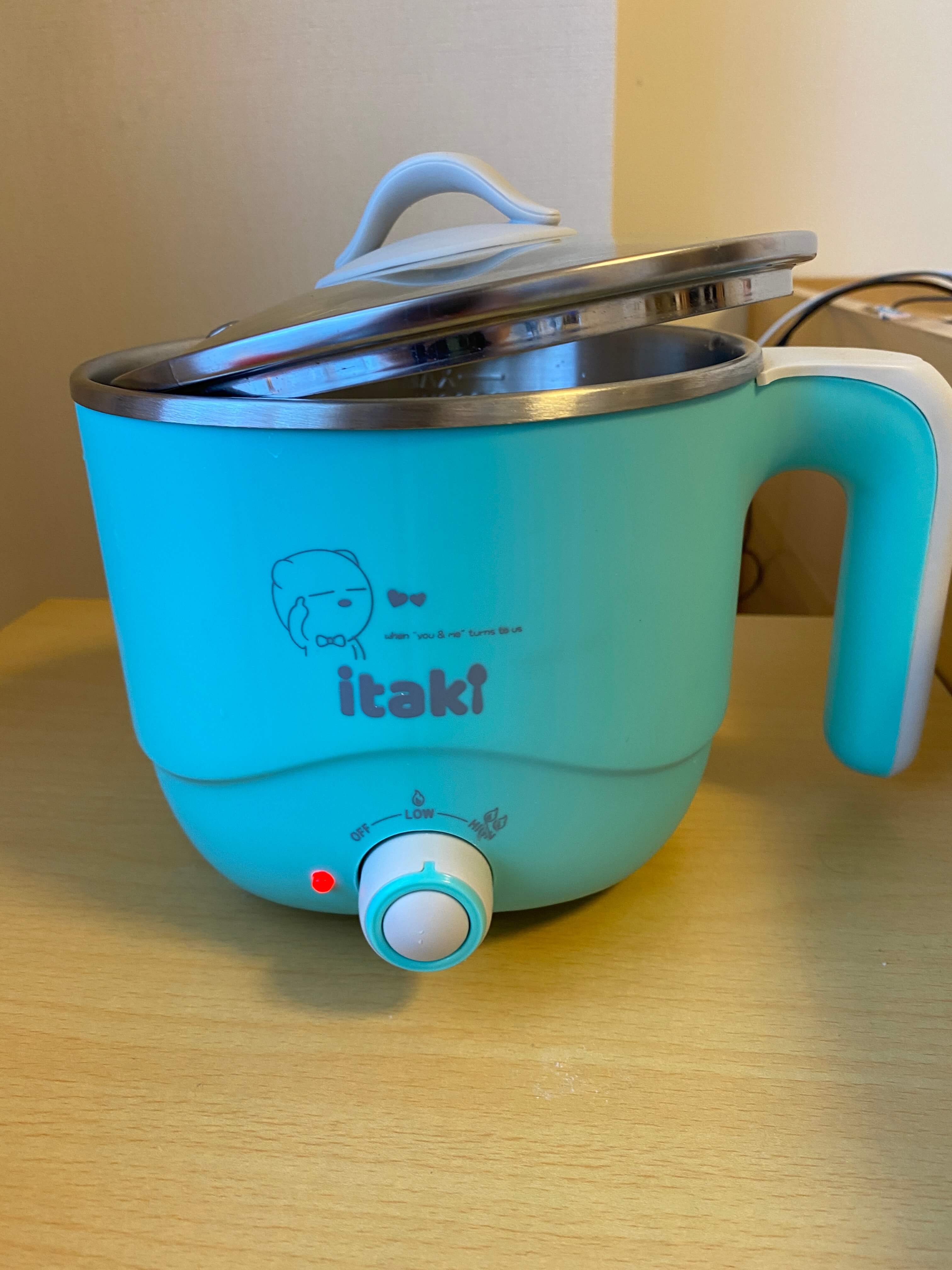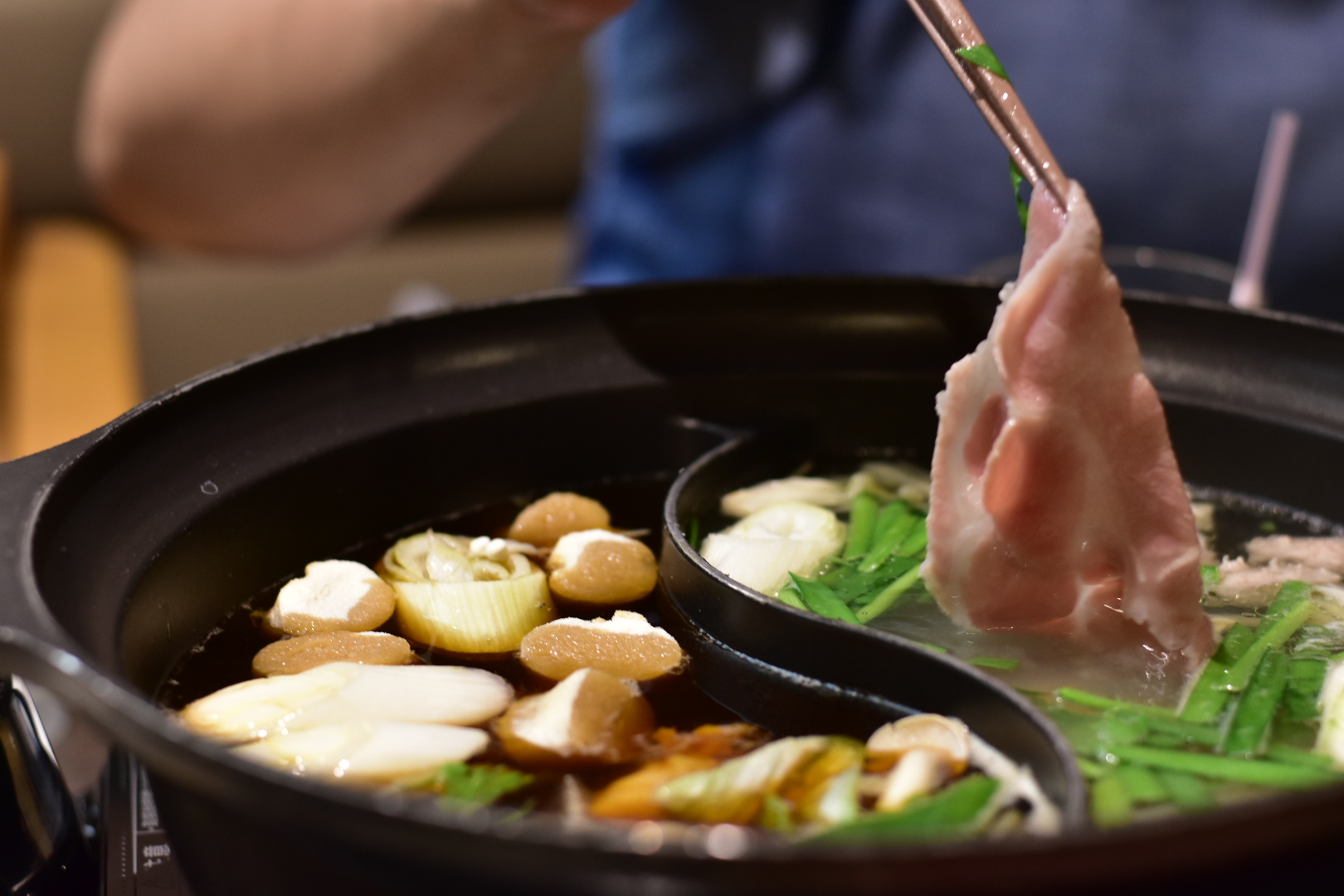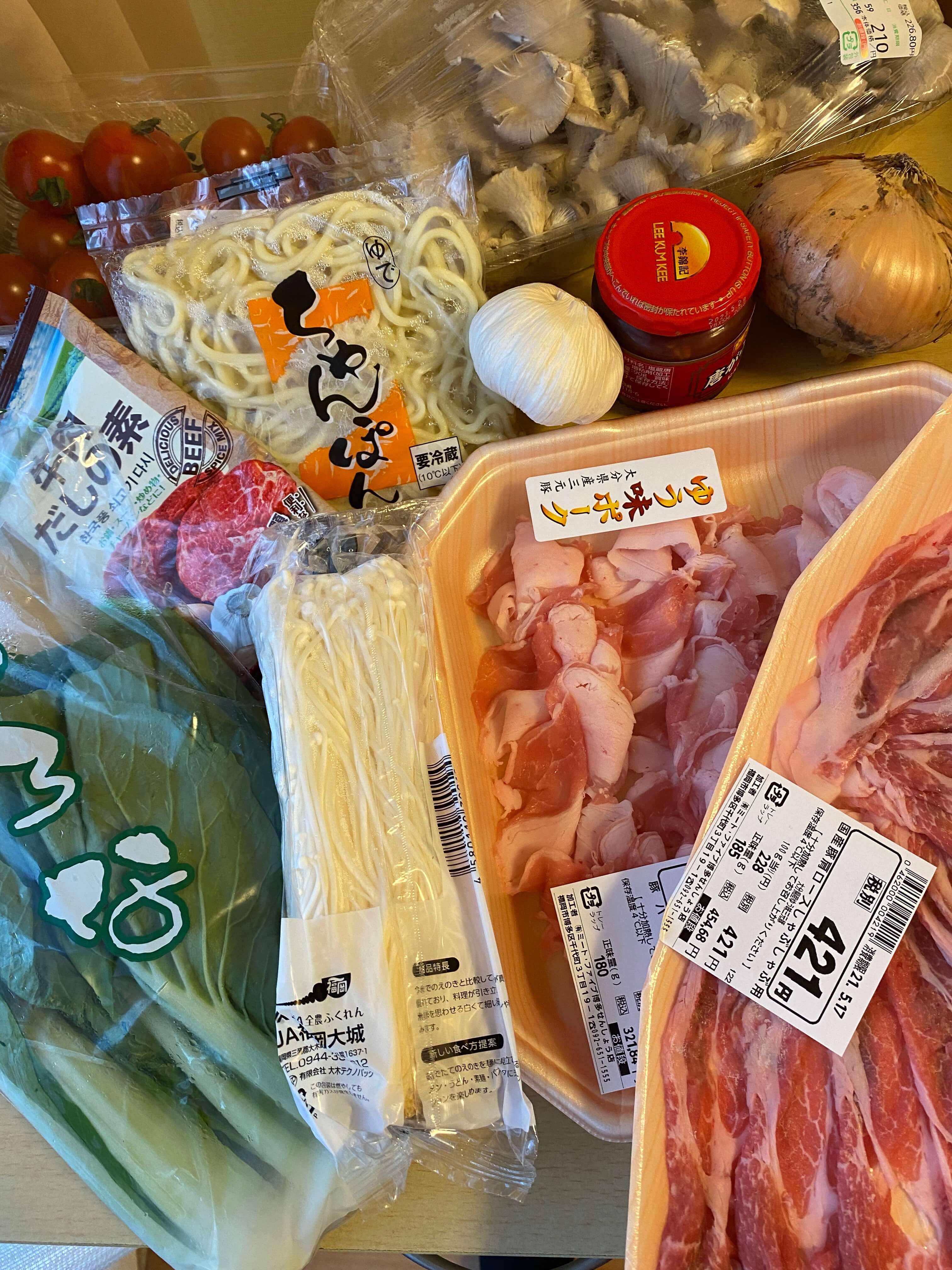This post contains affiliate links, which means I may receive a commission if you purchase through my links, at no extra cost to you. Please read the full disclosure for more information.
Apartment Cooking in Japan
When I moved into my own place a few months ago, one of the things I was most excited about was having the ability to cook again. Now I don’t enjoy cooking every meal for myself, but I do love whipping up the occasional breakfast omelet or stir fry lunch.
I have fun perusing grocery stores to see the unique Japanese offerings, and there is something about the freedom and creativity that cooking bestows that keeps me hungry for more (pun very much intended ?).
Since my living space is quite small, (as expected of Japanese housing), I have had to be mindful about all the cookware and supplies I purchase – buying things that optimize both a small footprint and high versatility!
…and that’s where the Itaki Shabuki Pot comes in!

The Itaki Shabuki Pot
I saw this mini cooking gadget a year or two back and was immediately drawn to it. (Yes it’s my favorite color), but its functionality also resonated with one of my biggest gastronomic delights: with this portable pot, you can easily make single-serving hot pot meals!

After doing a bit of research, reading reviews, and learning about the variety of items one can cook in it, I decided to order the Shabuki Pot for myself.
Since I only have a single hot plate and skillet right now, the Shabuki Pot would allow me to cook soups, boil eggs and noodles, steam food, or make rice without needing to buy another heating element and pot.

A few weeks of excited waiting passed, and then it arrived! The color was just as beautiful in person, and I went right to work testing it out.
First things first, time to make some shabu shabu!
If you want to learn more about the Shabuki Pot, check out Itaki’s official site here! (Use the code MATW for a special discount!)
Hot Pot Ingredients
I hit the grocery store and picked up a variety of ingredients for my first hot pot meal. Even with just the basics (mushrooms, leafy greens, thinly sliced meat and noodles) I quickly realized that I would have a lot of leftovers. It’s hard buying for one person sometimes! Not to worry though, any leftovers would go into making other meals later.

Back in the US, I liked using packaged spicy soup bases, but unfortunately, I couldn’t find anything similar on my store run. Instead, I decided to improvise with spicy miso paste, sauteed garlic, oil, and beef soup broth flavoring.
Here are the ingredients I ended up using (think of this as a starter list, there are so many other things you can add to your own meal!):
- Minced garlic (can really never have enough of this)
- Sliced onions
- Tomatoes (halved)
- Spicy miso paste
- Beef soup flavoring
- Noodles
- Mushrooms
- Sliced beef
- Sliced pork
- Asian leafy greens
Making Hot Pot in the Shabuki Pot
Since hot pot is just a soup of your favorite ingredients, it’s pretty easy to make and allows for lots of flexibility. I started by giving the garlic, onions, tomato, and miso paste a quick saute in olive oil. (You have to be quick about this step as the Shabuki Pot has an automatic safety shut off feature that kicks in if there aren’t enough contents in the pot. Great for safety, but this makes sauteing for a long time difficult).

Once the aromatics were released (and making me crazy with hunger), I added in water and let it come to a boil. With a sprinkle of beef flavoring to taste, my simple soup base was ready. (I’ll admit it wasn’t as delicious as restaurant broth, but it was a simple, flavorful, and solid first attempt).

With the soup bubbling away, I cooked the mushrooms, greens, and slices of meat – eating everything as I went. It was so fun to be able to bring a bit of the restaurant experience to my own place.
(With the current Covid-19 Pandemic going on right now, I liked that this was a way to treat myself to a “special” meal without having to venture out to a restaurant.) Not to mention, I was also able to watch anime as I ate!

There are a lot of other ingredients I enjoy having in the hot pot that I didn’t include in this meal. (Fried tofu, fish balls, taro chunks…) Things I’ll try to find at the store for next time!
Final Thoughts
I finished everything that I had cut and prepared, but even that was only about 1/3 of all the stuff I bought. With all the ingredients priced roughly at $25, I was able to eat this meal, and be completely full, for about $8.50!
The Shabuki Pot performed great and kept the soup hot the entire time. Since I had lots of liquid in the whole time, I didn’t have to worry about it switching off.
The only downside I’ve found so far is that the included power cord is pretty short and it is a bit awkward to clean since there are no removable parts.
I can’t wait to continue experimenting with this little pot! So far it has come in handy for boiling eggs, making packaged ramen, simmering rice porridge, steaming dumplings, and cooking soba noodles to go along with my other meals. These are just the basics so far, but I’ll be getting more creative soon!
Hopefully, you enjoyed this glimpse into my Japanese apartment cooking life. Leave a comment about what you’ve been cooking up or if you have any ideas for what I should try next!
If you are interested in ordering a Shabuki Pot for yourself, order here and use my code: MATW (short for Maris Around the World) at checkout for a discount!
If you are interested in reading more about life in Japan, check out these other blog posts!
- Chawan Mushi – Japanese Savory Egg Custard in the Itaki Shabuki Pot – Learn how to make another delicious dish in the Shabuki Pot!
- Studying Japanese in Japan: 4 Month Progress Update – Learning Japanese and exploring Fukuoka!
- Giving Customs in Japan – How is gift-giving different in Japan?
- Costco in Japan: The Same or Different?
- Winter Oyster Huts in Itoshima – A Kyushu Specialty – Grill-it-yourself oyster huts in Itoshima!
